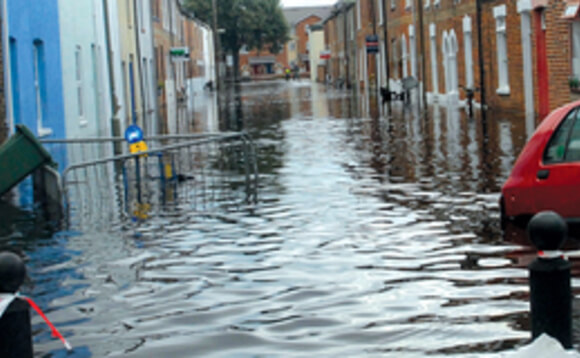
Unfortunately many homes, especially in the North of the UK, have been severely affected by floods over the recent weeks (as of 07/01/2015). Some building and homes have been damaged beyond repair and are under the care of building insurance companies. Some homes that have been flooded however are repairable and anything you can do yourself will make the time to settling back into your home that bit shorter.
One of the main concerns after a house has been flooded is the risk of mould appearing throughout the home. If the home is left uncleaned or untreated for even a short period of time then this risk is heightened.
Remove Items That Aren’t Wet
Firstly move items out of the home that didn’t get wet, ideally into storage or another building if possible. Some people move items into the upstairs rooms but this might not be a perfectly safe solution.
It is suggested that items that got wet during the flood should be thrown away in case the water was seriously contaminated. All items should be recorded for house insurance purposes before being thrown away.
If you really want to keep items, such as furniture, that got wet during the flood then they need to be disinfected and cleaned thoroughly. Any soft furnishings such as rugs or pillows should never be kept.
If the flooring was covered in carpet then this also needs ripping up and removing. After flood water damage there is no safe saving of a carpet as it can host a variety of bacteria from flood water.
Drying Out The Home
Flood water can penetrate the seemingly impenetrable, this means it can get under work surfaces, tiles, skirting boards and floorboards. The house needs to be dried out completely before it is safe to live in again without the risk of mould appearing.
Using dehumidifiers, fans and heaters are the most common ways to dry the house out if you have access to these. Some charities, organisations and even people on Facebook groups are willing to lend this equipment to victims of floods if you are unable to source drying equipment yourself.
It is likely that your house insurance company will send out an assessor to discuss with you what needs to be taken out and replace in regards to walls, units and fittings. Before any repair work is to start on any building items such as these it is imperative that the house is dried thoroughly or the repair work will not be up to standard.
Cleaning Once Dry
You will need to use a mix of antifungal, antibacterial and general household bleach to clean the house completely. This will take more than one go, probably several to make the house safe from contamination after a flood.
Moving Back In
When the house is dry and clean it should be safe to move back in properly as long as there is no structural damage which you will have been warned about by this point.
It is very important to keep a close eye on the house for mould and unfamiliar smells. If either of these occurs then they need to be dealt with as soon as possible to reduce any risk to your health.
Below are some organisations who can provide help during a flood or flood warnings:
Environment Agency Flood Warnings
